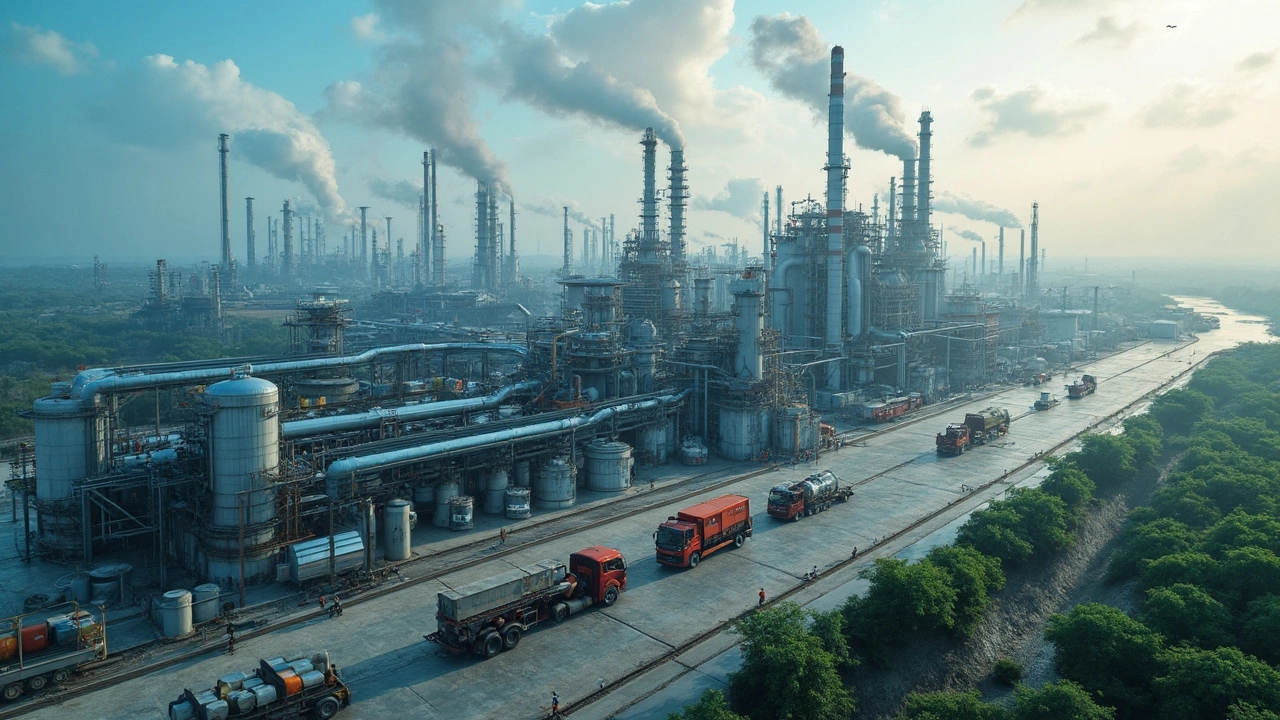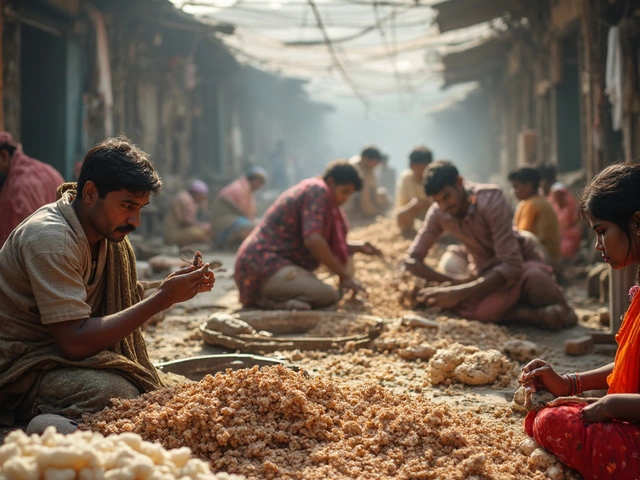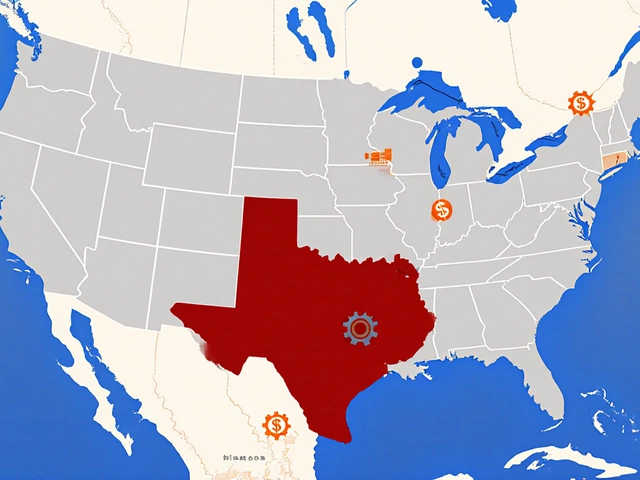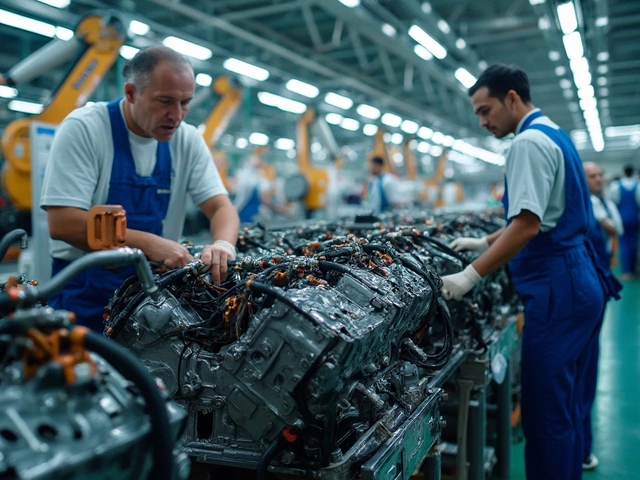When you check out the chemical industry in India, it’s hard not to be impressed by its size. India is one of the world’s largest producers of chemicals, exporting to over 175 countries. This market covers everything from fertilizers to specialty chemicals used in daily products.
If you’ve ever wondered who stands tall as the biggest chemical company in India, you’re in for a surprise. It’s not some obscure name—Reliance Industries leads by a country mile. This powerhouse isn’t just a name in textiles and oil; its chemicals business is massive and impacts everything from agriculture to automotive sectors.
Want to know why this matters? Chemical companies are the backbone for loads of products you use—detergents, paints, packaging, you name it. So, understanding who’s running the show helps if you're an investor, planning to do business, or simply want to get how industries tick.
- India’s Chemical Market: The Basics
- Who Takes the Top Spot?
- How This Industry Giant Stays Ahead
- Tips for Navigating the Chemical Sector
India’s Chemical Market: The Basics
The chemical industry in India is a giant—literally one of the largest in the world. Think about it: this sector is worth over $220 billion as of 2025, covering everything from basic chemicals and petrochemicals to fertilizers and specialty high-value materials. Not only does it fuel domestic needs, but it brings in hefty export earnings.
If you walk through any manufacturing plant, chances are high that Indian-made chemicals are at work behind the scenes. These chemicals power the production of plastics, dyes, paints, textiles, soaps, and even the food you eat.
"India’s chemical sector is poised to double by 2030, driven by rising demand and global shifts. Indian manufacturers are building scale and capability faster than ever," reports an analysis by the Confederation of Indian Industry (CII).
One thing to know: India ranks among the world’s top three chemical-producing countries in several major product segments. The country holds a 16% global market share in dyestuffs and dyes intermediates. That may sound technical, but it just means India is the paint and color playground for much of the world.
Here’s a quick look at some key stats:
| Stat | Value (2024/25) |
|---|---|
| Total Market Size | $220 billion+ |
| Share of Global Chemicals | ~4% |
| Number of Manufacturing Units | 80,000+ |
| Major Exports Destinations | USA, China, Brazil, Indonesia, Germany |
| Top Products | Pesticides, Dyestuff, Bulk Chemicals, Specialty Chemicals |
If you’re looking to understand the biggest chemical company India has produced, you can’t ignore these numbers or the global impact. The government also offers various incentives to boost this sector—like cheaper land for factories and easier export policies—which keeps the momentum strong. If you’re in business, these market basics can help you spot opportunities for growth or partnership.
Who Takes the Top Spot?
If you zoom in on the market, Reliance Industries is hands down the biggest chemical company in India, both by volume and value. Forget long lists—Reliance dominates the scene with numbers that are honestly hard to ignore. In their last full reporting year, the chemicals division alone brought in revenues crossing ₹200,000 crore, which crushes the competition.
Reliance isn’t just sticking to one product category, either. They’re pumping out petrochemicals like polyethylene, polypropylene, and PVC that feed the packaging, automotive, pharmaceutical, and even the textile industries. All those common plastics and fibers? There’s a good chance they start in a Reliance factory.
Here’s a quick data snapshot so you see their dominance for yourself:
| Company | 2024 Revenue (₹ crore) | Key Products | Market Share (%) |
|---|---|---|---|
| Reliance Industries | 200,600 | Petrochemicals, polymers, chemicals | 31 |
| Grasim Industries | 30,800 | Viscose, chemicals | 5 |
| Tata Chemicals | 16,400 | Soda ash, salt, sodium bicarbonate | 3 |
It’s not even a close game. Reliance rakes in nearly seven times more than the next in line, Grasim Industries. That means every third rupee in the Indian chemical market comes from Reliance alone!
Why do they dominate? Scale, for one. Their Jamnagar complex isn’t just big—it’s literally the world’s single largest refinery-cum-petrochemical setup. That scale drives down production costs so Reliance can offer products to local and global markets at competitive prices. Plus, when oil prices swing, Reliance can shift gears thanks to its integrated operations, whether refining, processing, or diversifying the chemical portfolio.
Reliance is also big on investing back into its chemical business. In the past five years, they’ve poured billions into expanding their petrochemicals and specialty chemical segments, including next-generation biodegradable plastics and specialty resins.
Other big names—like Tata Chemicals and Grasim Industries—hold their ground in niches, but the sheer size and reach of Reliance puts them in a league of their own. If you want to tap into India’s chemical market, you can’t afford to overlook how much Reliance shapes the dynamics here.

How This Industry Giant Stays Ahead
So why does Reliance Industries dominate the Indian chemical market? It’s not just about being big. They’ve nailed down a strategy that’s tough to beat, combining vertical integration, non-stop upgrades, and a serious eye on market trends.
First off, vertical integration is a game changer. Reliance covers everything, from crude oil processing right down to finished chemical products. That means they control both raw materials and final goods, which cuts costs and gives them flexibility when prices swing.
Next, let’s talk about scale. Their Jamnagar refinery isn’t just big—it’s the world’s largest. This setup lets them crank out chemicals in higher volumes and keep unit costs low. Plus, with facilities in Gujarat and Maharashtra, they keep logistics smooth across India and beyond.
But Reliance doesn’t just stick with the basics. They invest in research and tech like advanced polymer plants, renewable chemistry, and green hydrogen. In 2024, the company even ramped up digital control systems at their chemical plants for better efficiency and safety. They know that if you snooze, you lose—especially with global players eyeing the biggest chemical company India title.
What about market adaptability? Reliance keeps close tabs on what’s hot, moving into segments like specialty chemicals and performance materials rather than just bulk stuff. They’ve started offering products for electronics and automotive industries, positioning themselves where growth is coming fastest. When new regulations or trends hit, they move fast instead of slowing down for red tape.
It all adds up: control from start to finish, constant technology upgrades, and a sharp focus on what the market actually wants. That’s how they keep their lead while others play catch-up.
Tips for Navigating the Chemical Sector
If you’re thinking of stepping into the Indian chemical industry—whether as an investor, job seeker, or business partner—a smart strategy can make a big difference. This sector moves fast. There’s a ton of variety, but also a few risks to watch out for.
The biggest thing to keep in mind: Everything centers around scale and compliance. The biggest chemical company India keeps its edge because it invests heavily in both. Here’s how you can get a piece of the action or at least avoid common pitfalls:
- Keep up with regulations: Chemicals are tightly controlled, and India updates its rules often. Make sure you understand local and global regulations—like the new BIS standards for chemicals. Getting caught off guard by a compliance issue can cost you big time.
- Prioritize sustainability: Demand for eco-friendly chemicals is rising. Companies embracing green practices—like Reliance swapping some raw materials for bio-based options—are seeing faster growth and fewer headaches from regulators.
- Focus on end-user industries: The real money is in chemicals that serve pharma, auto, and agriculture. When these sectors boom, chemical suppliers benefit the most. Watch for shifts in these areas—like new investments in electric vehicles or increased spending on infrastructure.
- Don’t ignore logistics: Moving chemicals safely and quickly is make-or-break. The big players invest in in-house logistics or tie-ups with transport specialists. If you’re in the game, keep your supply chain smooth and transparent.
- Watch for innovation, not just size: Even smaller companies can grow fast if they find a niche. Speciality chemicals, for instance, have seen homegrown Indian companies beat international brands by focusing on a handful of specialty products.
Quick tip: Networking at trade shows like ChemExpo India or staying updated through industry forums helps you spot new trends fast. The landscape is always changing, so being informed is your best bet for making solid decisions in this space.





